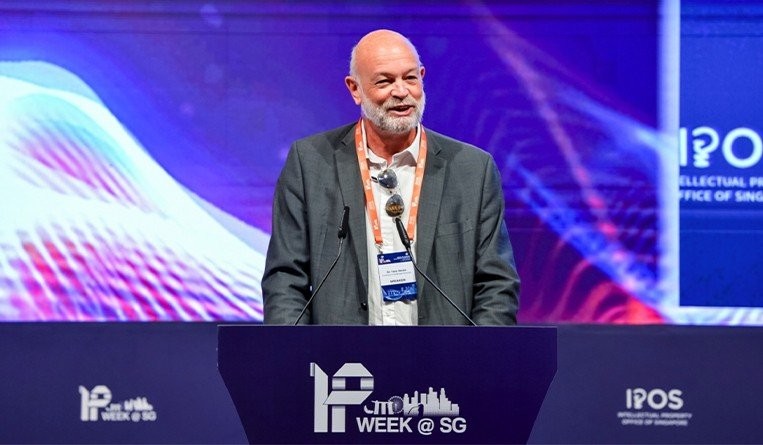Taking control of our own destiny
30 September 2019
 Tony Raven has backed winners and losers in the venture capital game, but his record is overall magnificent. He tells Johnny Chan about some of Cambridge Enterprise’s biggest wins – and what’s ahead for the commercialization arm of the University of Cambridge.
Tony Raven has backed winners and losers in the venture capital game, but his record is overall magnificent. He tells Johnny Chan about some of Cambridge Enterprise’s biggest wins – and what’s ahead for the commercialization arm of the University of Cambridge.
Asia IP: As the chief executive for almost eight years at Cambridge Enterprise, what has been the most significant IP commercialization you’ve been involved with, and why?
Tony Raven: That’s like asking someone to name their favourite child. One I am particularly fond of though is IC Thinking, a not-for-profit spin out in conflict resolution from the School of Divinity. Not only is it making a big difference for the better in the world but it’s also a great demonstration that there are great opportunities in all disciplines, not just STEM and life sciences.
AIP: As you have been involved in academia, technology entrepreneurship and now commercialization, which do you enjoy the most and why?
Raven: They were/are all very enjoyable, but in very different ways and at different times in my life. I doubt I would make a very good academic now nor do I have the energy for another entrepreneurial start-up, but I am able to use everything I’ve learnt over the years to pay forward to the next generation for all the help I’ve received in my career. And the opportunities you get to see in Cambridge are just mind-bogglingly exciting in a way that my research and start-ups could only dream of being.
AIP: Do you make suggestions to Cambridge University on which IP it should develop, or does it create whatever it deems worthy?
Raven: There is a well-established principle in UK politics called the Haldane principle, which is that research should be determined by researchers, not politicians (or administrators!). And that principle holds in our activities. We support commercialization of the outcomes of research, but don’t try to influence what research is done.
AIP: While you support everything from archaeology to zoology across campus, which field usually produces more commercial IP, and why?
Raven: Life sciences and chemistry are probably the most productive sources of commercial opportunities, but they can truly arise from any part of the university.
AIP: What are the benchmarks for IP commercialization?
Raven: The only real benchmark is the positive impact IP commercialization has created in the world. That can take a long time to realize – it’s on average, for example, 17 years from lab bench to patient in drug development, so there are a number of short term proxies that are used such as number of active licences or spin-out investment raised, but you need to be careful to remember that they are only short term proxy indicators, not the ultimate objectives.
AIP: What are common challenges in commercialization and how are they tackled?
Raven: The biggest challenge is that much of the technology is too early stage and too disruptive for the market incumbents to appreciate. I describe it as like offering an electric light bulb to a candle maker. Remember that everyone turned Google down when it started, and monoclonal antibody drug technology, pioneered in Cambridge and now behind six of the top ten selling drugs in the world today, was turned down by all the pharmaceutical companies. The way this is increasingly being tackled is by taking control of our own destiny – having access to the resources and investment funds to take a great idea forward through a spin-out regardless of what industry of today thinks about it.
AIP: Out of 10, how many IPRs are good enough to be commercialized, and how do you help those that are good but not marketable?
Raven: It’s not a binary succeed/fail decision. It’s a journey together with our academic colleagues to explore the commercial potential. For example, recently we licensed a new stable high temperature thermocouple design for use in jet engines to T E Wire & Cable. At the outset, the industry structure meant there was no obvious licensee to approach. It was only when two companies merged that a licensee able to take the idea forward emerged. So, it was not that the IPR was not good enough – it was the lack of a company that could take it forward.
AIP: Have you ever significantly misjudged the value of an IP? How do you avoid that happening again?
Raven: Nobody has a monopoly on foresight, and many people in the sector do worry too much about missing the big one. But the reality is we will miss some winners and back some losers. I really like the anti-portfolio of Bessemer Venture Partners – one of Silicon Valley’s oldest venture capital firms. They list some of the investment opportunities they turned down, including Apple, Google, Intel and Paypal. It’s the honesty about the realities of this business. How do you avoid this? Well, we are not the only game in town, and you make sure that opportunities have the chance to be taken to other backers rather than sitting on it and killing it.
AIP: Compared to its counterparts, Cambridge Enterprise generates more licenses per pound Sterling or dollar of research funding, and at the lowest cost per license. Cambridge University spin-outs have also raised the largest amount of investment in total over the past five years. How did you manage those achievements?
Raven: There are three key factors. We get to work with some of the world’s leading researchers on some of the world’s most ground breaking research. We benefit enormously from the community of successful academic and business entrepreneurs in the Cambridge Cluster who give generously of their time and advice to support the next generation of ideas. And the university is very supportive both in its policies and resources, including major commitments to investment funds to support university spin-outs and start-ups in the cluster.
But looking at it now, it’s important not to forget that we started out with just a great university in a remote agricultural region of the country, just as Silicon Valley started as a valley of fruit orchards and a then middle-ranking university called Stanford. We have all started from nothing. We are just a bit further down the road than many others.
AIP: Under your helm, Cambridge Enterprise’s venture funding capacity has grown by 730 percent, the number of spin-outs created has gone up by 250 percent, and its consultancy support service has increased by 90 percent, what are your next steps?
Raven: I believe there are plenty more opportunities across the university that will extend into new areas that have hitherto been important but under-supported. For example, we’re putting in place, with university support, the resources to support the growing demand from across the campus while we have specific foci on much greater support for the arts, humanities and social sciences, where the opportunities are often very different in nature from those in STEM and life sciences, and in agritech and sustainability, both of which are important for the future of our planet and its population.






